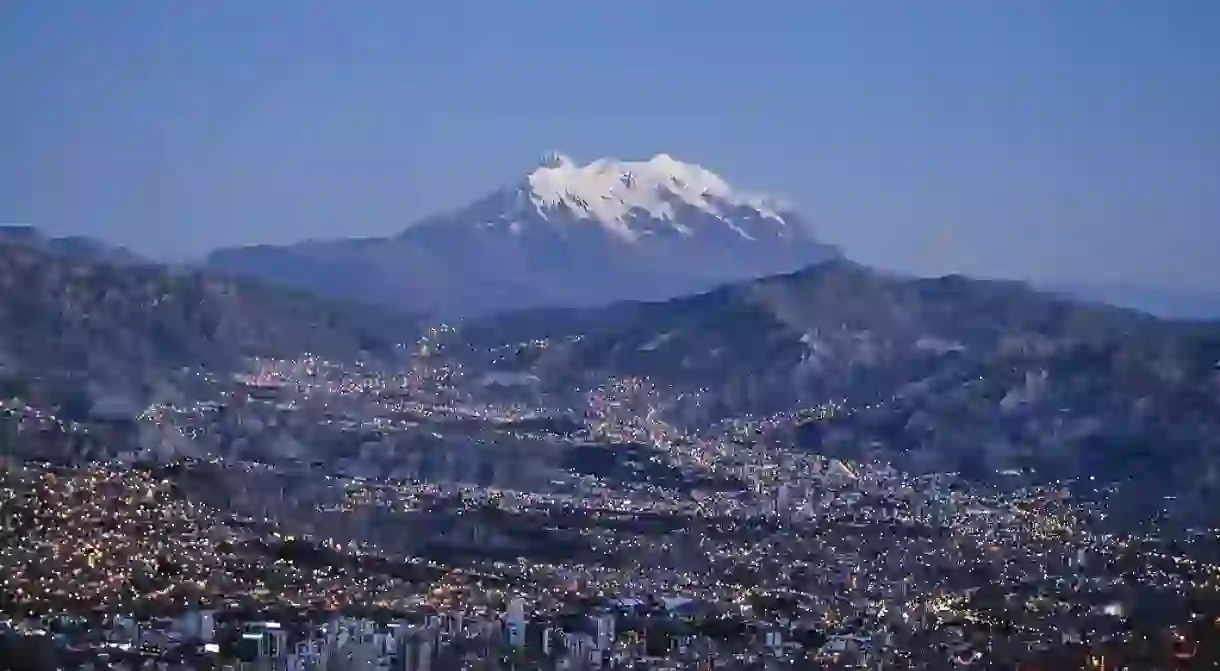14 Things You Didn't Know About La Paz, Bolivia

Chaotic, crazy and full of contradictions, La Paz is a strange city to say the least. There are plenty of interesting facts that make it unique, many of which are unknown to the casual traveler. So read on to discover a few things you might not know about this unusual Bolivian “capital”.
It’s not the capital
The official title belongs to Sucre, the stunning white colonial city where independence was declared back in 1825. La Paz is actually only a de facto capital despite having the most important government buildings and ministries. It is, therefore, not the highest capital in the world either.

There are dead llamas buried everywhere
According to indigenous beliefs, animals should be buried under buildings to appease pachamama (mother nature) in return for her blessings. Smaller houses just have modest little llama fetuses underneath, though bigger projects require the sacrifice of a live alpaca or, if you believe urban legend, a human.

Eiffel has left his mark
The big bus station in the center of tower is actually an Eiffel, as is the Museum of Contemporary Art. Although they may not be as grandiose as the big tower in Paris, they were designed by the same famous architect.

La Paz is a city that sleeps
Clubs and pubs legally have to close at 3:00 am. Those that don’t are simply just paying off the cops to keep the drinks flowing and the money coming in. After about 11 pm, most of the city is eerily quiet – a welcome contrast to the hustle and bustle of the day.

It's golf course is the highest in the world
Cholitas Wrestling is about combating domestic violence
It started some 15 years ago as a way for abused women to vent their frustrations and form a supportive network of friends. These days, the feisty cholitas beating down on their male counterparts is symbolic of woman finding the strength to fight back against their abusers.

People trade miniature versions of the things they desire
At least during Alasitas, anyway. This quirky festival for a month in January sees thousands of people descend on a special market to buy tiny little miniatures of the things they want in the upcoming year. If blessed by a local priest and an indigenous witch doctor, these desires are said to become reality.

Designer goods can be found for pennies
A lot of the used clothing that gets donated to charity in the USA ends up in third world countries like Bolivia. Some of these thrown out garments are almost brand new designer goods. The best place to search for such bargains is the El Alto Market on Thursday and Sundays. Though be warned, patience is definitely a virtue.

There are special hotels where alcoholics go to die
They go by the depressingly symbolic name of the Elephant Cemetery. Although strictly illegal, many of these clandestine lodgings exist around the city, offering little more than a dirty mattress and some pure alcohol for the wretched to live out their final days.

The clocks run backwards
At least the one on the House of Congress does. The massive public timepiece which overlooks the city’s most important public plaza was configured to run backwards in order to pay homage to Bolivia’s indigenous heritage and help the people get back to their pre-colonial roots. Or something along those lines, anyway.

The cable car is the longest in the world
It’s also the highest at its peak in El Alto. What’s more, construction is underway to add another 10 miles (16 km) to the system which will make it the longest by a massive margin. Not bad for a developing country in the middle of South America.

There are more parades than days of the year
Known locally as entradas, every neighborhood in the city has at least one, if not more. Don’t be surprised to see a colorful group of traditionally dressed dancers and boisterous musicians blocking the streets with their festivities at any time of the year.

It has the world’s craziest prison
Immortalized by Rusty Young’s novel Marching Powder, San Pedro Prison is reportedly home to cocaine labs that produce some of the finest gear in the country. Inside, children live with their families, leaving only to go to school in the mornings. Crazier still, tourists used to be able to visit on guided tours and party the night away in jail.

Zebras direct the traffic
Okay, maybe just people dressed up in Zebra costumes. They do a really good job though and are a much loved presence in the city.














